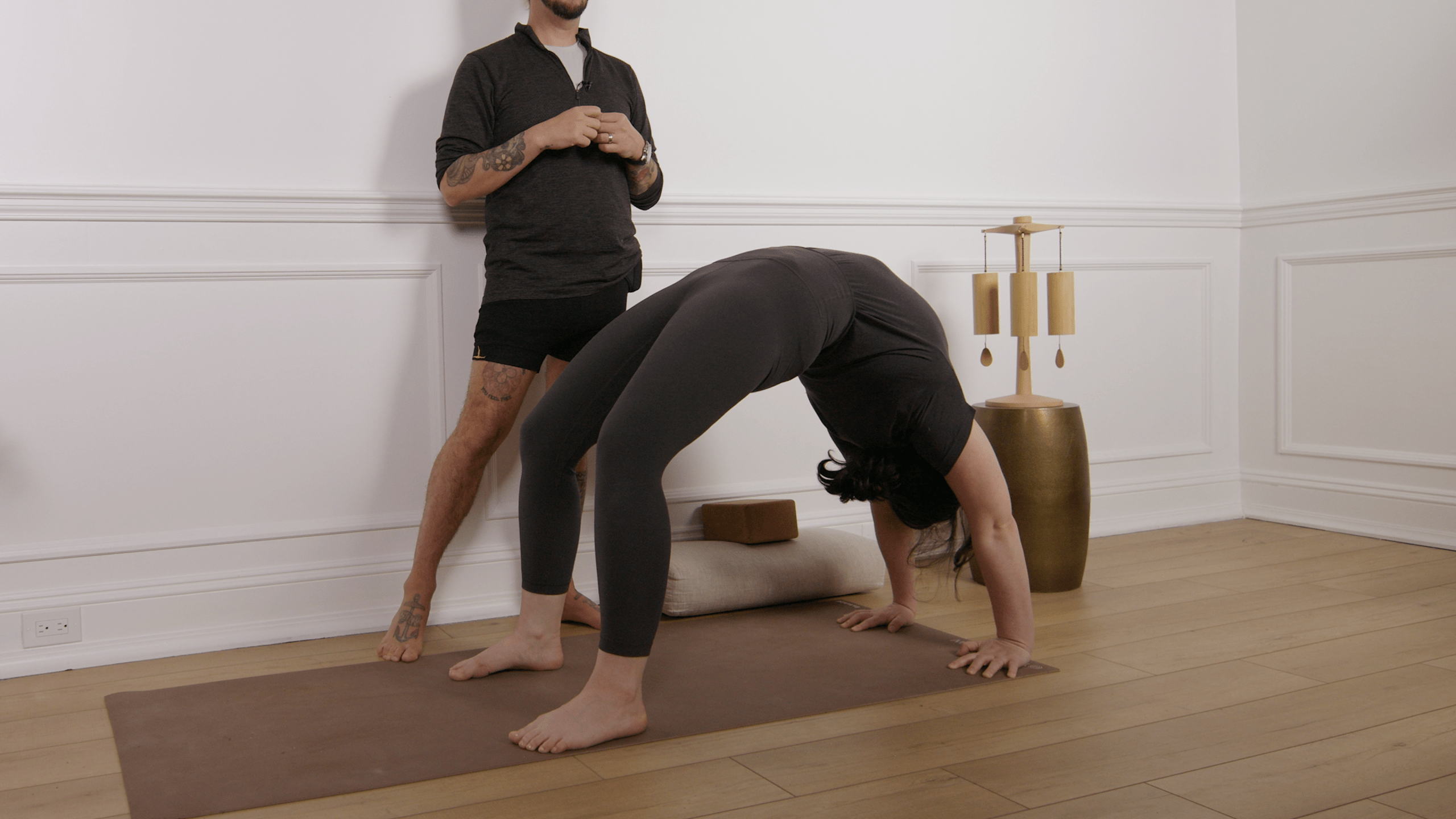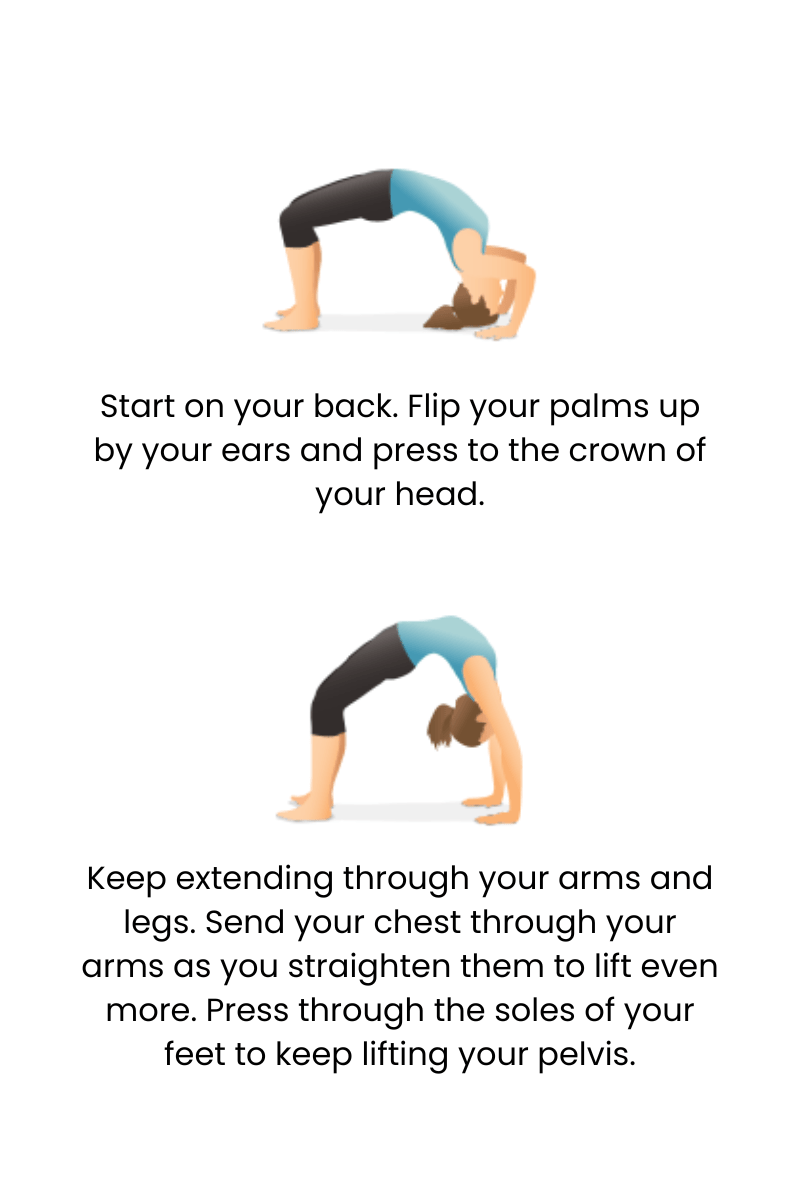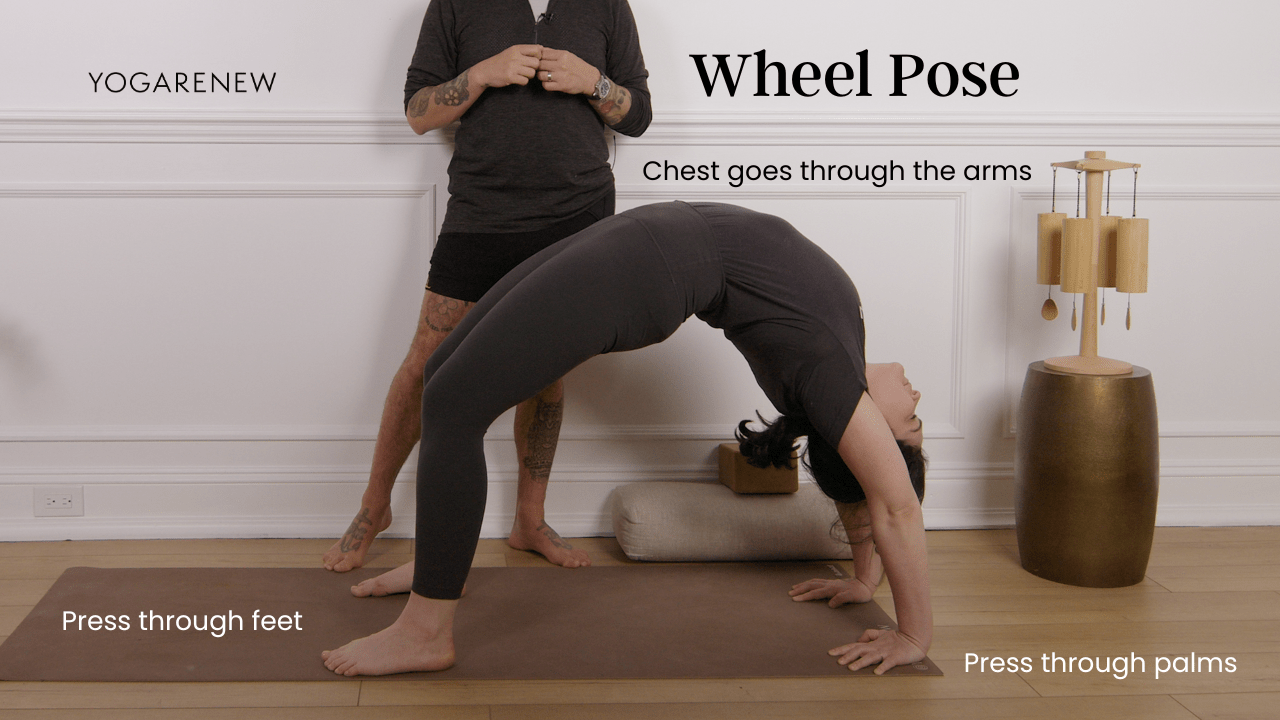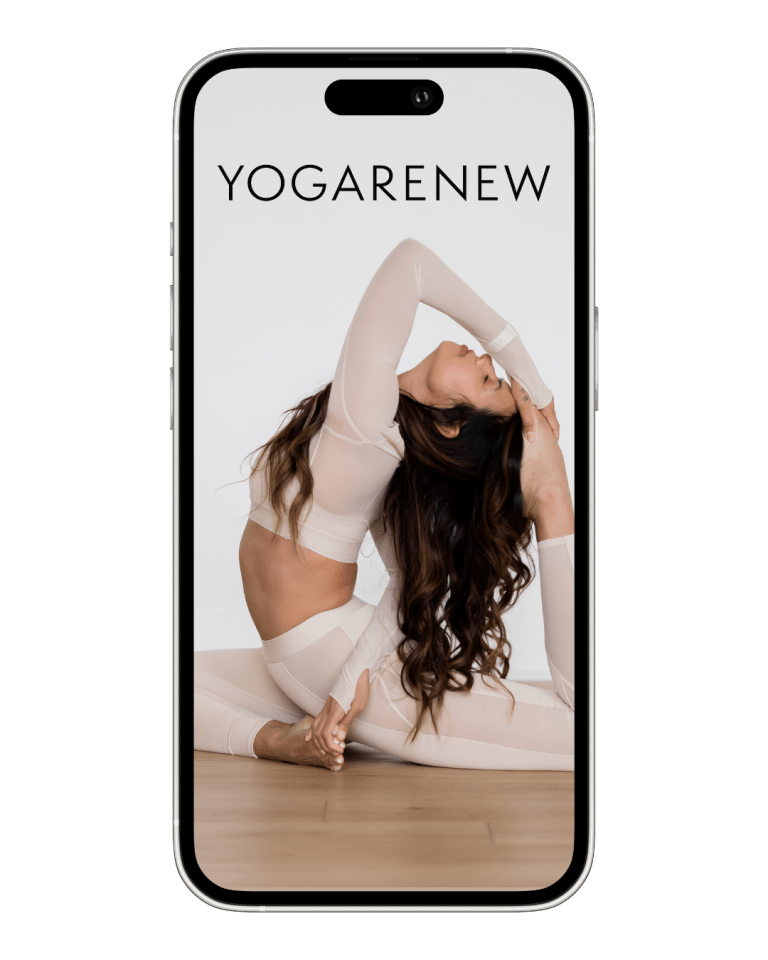What is Wheel Pose?
English Name: Wheel Pose
Sanskrit Name: Urdhva Dhanurasana (pronounced OORD-vah dah-noo-RAHS-uh-nuh)
Category: Backbend, Heart Opener, Intermediate to Advanced

English Name: Wheel Pose
Sanskrit Name: Urdhva Dhanurasana (pronounced OORD-vah dah-noo-RAHS-uh-nuh)
Category: Backbend, Heart Opener, Intermediate to Advanced
Wheel Pose, or Urdhva Dhanurasana, is a deep backbend that opens the entire front body while building strength, energy, and resilience. Named after the shape of an arched wheel, this pose combines flexibility, power, and courage—making it a peak posture in many yoga styles.
Often practiced in Vinyasa, Power, or Hatha classes, Wheel Pose invites a sense of openness and vitality. It challenges the spine, shoulders, and legs, while stimulating the nervous system and activating the breath. Though physically intense, it can be deeply rewarding when approached with awareness and preparation.


Keep feet parallel and knees tracking over ankles—avoid letting them splay out
Engage the inner thighs to protect the lower back
Press evenly through both hands and feet
Lift from the chest rather than pushing into the lower back
Avoid compressing the neck—keep it long and relaxed
“Root down through your hands and feet to rise into your heart.”
“Hug the inner thighs together like you’re holding a block.”
“Shine your chest toward the wall behind you.”
“Lengthen your tailbone toward your knees.”
“Breathe into the front of your body—open from the inside out.”
Bridge Pose: Practice Setu Bandhasana instead to build strength and flexibility safely
Use Blocks Under Hands: Elevate the hands on blocks to reduce wrist strain and make lifting easier
Wall Support: Place feet against a wall to help maintain alignment
Assistance or Spotting: Have a teacher guide or assist you in lifting into the pose
One-Legged Wheel: Extend one leg toward the sky while maintaining balance
Forearm Wheel (Dwi Pada Viparita Dandasana): A deeper variation for advanced practitioners
Dynamic Wheel: Move in and out of the pose with breath for a flowing backbend sequence
Strap Around the Thighs: Use a yoga strap to prevent knees from splaying apart
Wheel Pose is a bold, energizing backbend that symbolizes expansion, possibility, and openness. While physically demanding, it offers powerful rewards—from spinal health to emotional release. Urdhva Dhanurasana is a pose of courage, inviting you to rise up, trust your strength, and open your heart to what’s possible—on the mat and beyond.
It’s considered intermediate-to-advanced. Beginners should build up with preparatory backbends like Bridge or Cobra.
It may be due to tight shoulders, hip flexors, or insufficient core engagement. Keep practicing prep poses and use props.
Yes, if your body is ready and well-aligned. Always warm up thoroughly and listen to your body.

Explore classes & pose tutorials for any style, format, duration or experience level with a free account in the YogaRenew app. Or subscribe and gain access to workshops, live classes and more.